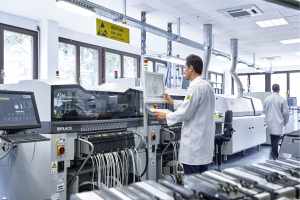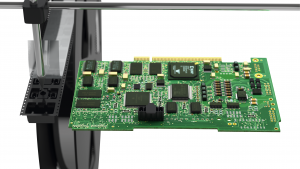Written by Duncan Nicol, Sales & Marketing Manager – Device Connections
 When it comes to designing a new electronic device, the initial considerations are function and aesthetics to ensure the device meets the requirements of the environment it is designed to function in.
When it comes to designing a new electronic device, the initial considerations are function and aesthetics to ensure the device meets the requirements of the environment it is designed to function in.
Way down the list of things to consider is the connector(s). And this can be something of an issue if the layout is already defined by the silicon and enclosure design. By definition, a connector is a component that interacts with other elements in the device or with the outside world. It connects things together, and for this reason the connector(s) is an integral part of the design.
When designing in the connection technology it is important to consider design for manufacturing. This is more often than not completely forgotten in the design process but it has significant impact on the time and cost of manufacturing the device.
 So what is design for manufacturing and why is it so important? Well, the vast majority of components on a typical PCB are surface mount which means they are picked and placed on an automatic reflow production line. However, certain component including connectors, are often too big for the automatic pick and place line and so are manually placed and soldered on either a wave or selective solder line.
So what is design for manufacturing and why is it so important? Well, the vast majority of components on a typical PCB are surface mount which means they are picked and placed on an automatic reflow production line. However, certain component including connectors, are often too big for the automatic pick and place line and so are manually placed and soldered on either a wave or selective solder line.
But the world of connectors has moved with the times and now there is a wide selection of PCB connectors available for automatic pick and place, both rectangular and circular surface mount or through-hole reflow (THR). What does this mean for design engineers? More choice for a start but also space, time and most importantly cost savings.
So let’s look into the various advantages of connectors for automatic pick and place.
Let’s start with space saving. Changing from a through-hole to a surface mount connector saves space on the underside of the PCB for other components. This has significant advantages for double sided PCBs where space is in short supply. Anchors are often included to provide mechanical strength.
Time saving is closely related to cost saving so we can cover these benefits together. Automatic pick and place offers significant savings in production for several reasons. An automatic pick-and-place production line only requires one or two operators at any one time to monitor the process and add components to the feeders as required. Pick & place lines run extremely quickly and often feature automatic inspection to ensure that the populated PCBs are assembled and soldered correctly. So being able to include connectors in this process is very beneficial as it negates the need for a secondary manual assembly line.
Therefore it is important to consider component choice with a view to the production processes needed. Simply put, if a PCB can be assembled in one automatic pick & place reflow process instead of two the total manufactured cost will be less.
For more information, please contact Duncan on 07799 072059 or email dnicol@phoenixcontact.com

